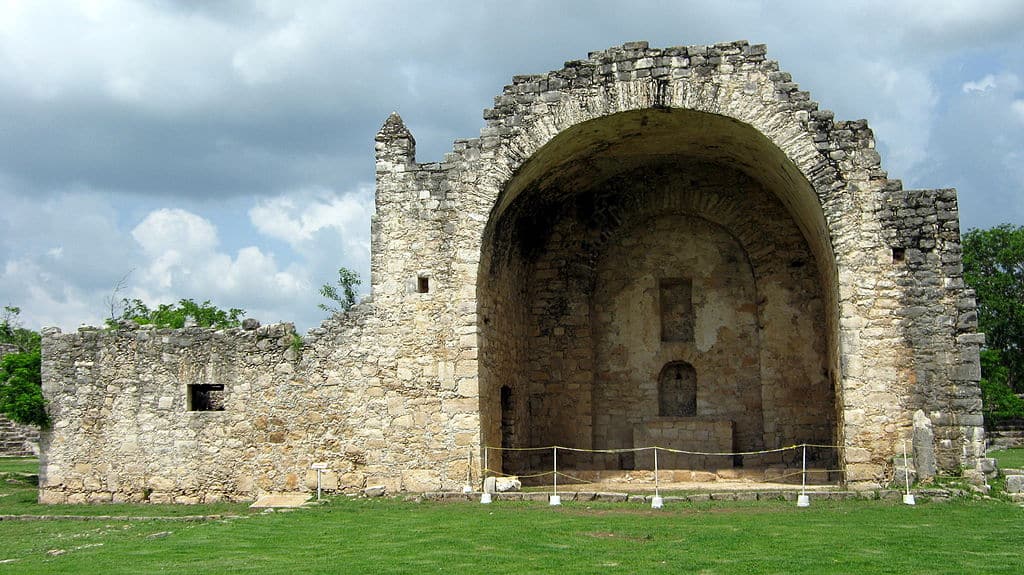The isolated Open Chapel of Dzibilchaltun

This XVI century chapel sits in the middle of what was one of the largest Mayan ceremonial centers. The stones with which the temples were built were later used to form part of a Catholic precinct. Here are some highlights on the Isolated Open Chapel of Dzibilchaltun.
It is impressive to see in the middle of an archaeological zone the remains of a Catholic temple from the XVI century, this tells us the importance that the ancient Mayan cities and ceremonial centers continued to have after several decades of Hispanic presence.
Dzibilchaltún Mayan Archaeological Site
The most famous structure is the Temple of the Seven Dolls, so named because of seven small figures found on the site when the temple was discovered by archaeologists in the 1950s. At the spring equinox, the sun rises so that it shines directly through one window of the temple and out the other. The temple is connected to the rest of the site by a long sacbe. The other main feature of Dzibilchaltùn is its cenote, in which it is possible to bathe. It reaches depths of 131 feet. Dzibilchaltun also contains the ruin of a 16th century Spanish church built on the site after the conquest.
The isolated Open Chapel of Dzibilchaltun: Mayan history
The archaeological site houses a museum containing Mayan artifacts from the site and adjacent region. These include stelae and scripts from Chichén Itzá and Uxmal. There is also an armor of the conquistadors, and a Mayan dress representative of Chiapas, Yucatan and Guatemala and pieces originating from a colonial church. The museum houses more artifacts than either Chichén Itzá or Uxmal.
The isolated Open Chapel of Dzibilchaltun: Xlacah Cenote
It is the most important open cenote in the archaeological zone of Dzibilchaltún, used by the Maya for water collection. It measures 40 meters deep and about 40 meters wide and 100 meters long. Its name is a Mayan word meaning “Old Town”.
The archaeological site houses a museum containing Mayan artifacts from the site and the adjacent region. These include stelae and writings from Chichén Itzá and Uxmal. Dzibilchaltún, in Mayan language means “The place where there is writing on the stones”, in allusion to the numerous commemorative tombstones found in the site, also called “Stelae”.
